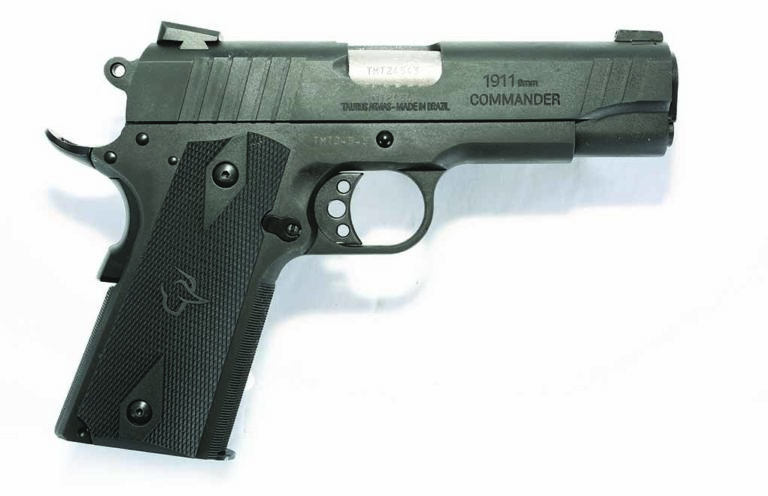
The all-steel Taurus 1911 Commander pulls off the compact iteration of the icon flawlessly at a price that can't be beat.
The government model in .45 ACP isn’t for everyone. In fact, it’s not the best choice for a lot of people. Taurus makes 1911s, and they knew the above, so it shouldn’t come as any great surprise to see the pistol we’re testing here.
Taurus keeps expanding in the firearms market, and at this rate, they’ll soon have to expand into ICBMs if they aren’t careful. Their latest is the 1911, but in a commander size and chambered in 9mm—simply known as the Taurus 1911 Commander. The 1911 is so well-known that background and details of the general pistol aren’t needed.
What we do need listed are the things that Taurus has changed or has done well, and what utility this pistol has for us.

The commander size resulted from the U.S. Army wanting to change pistols, back in the early 1950s. The Army wanted smaller, lighter, and 9mm. Colt offered an alloy-framed 1911 with a shorter barrel and slide, and 9mm. They even offered to rebuild the bazillion 1911/1911A1 pistol in inventory to 9mm. The Army decided they didn’t really want to change, but Colt offered the Commander to the market, and those who carried on a daily basis snapped them up, year after year.
Later, Colt offered the commander with a steel frame and changed the terminology a bit. The old one became the Lightweight Commander, and the all-steel became the Combat Commander.
Today, everyone calls either “commander” and then specifies steel or aluminum. And with the shift of everything to 9mm, you have to specify if it isn’t a 9mm.
Taurus’ Take
So, we have an all-steel commander from Taurus in 9mm Parabellum.
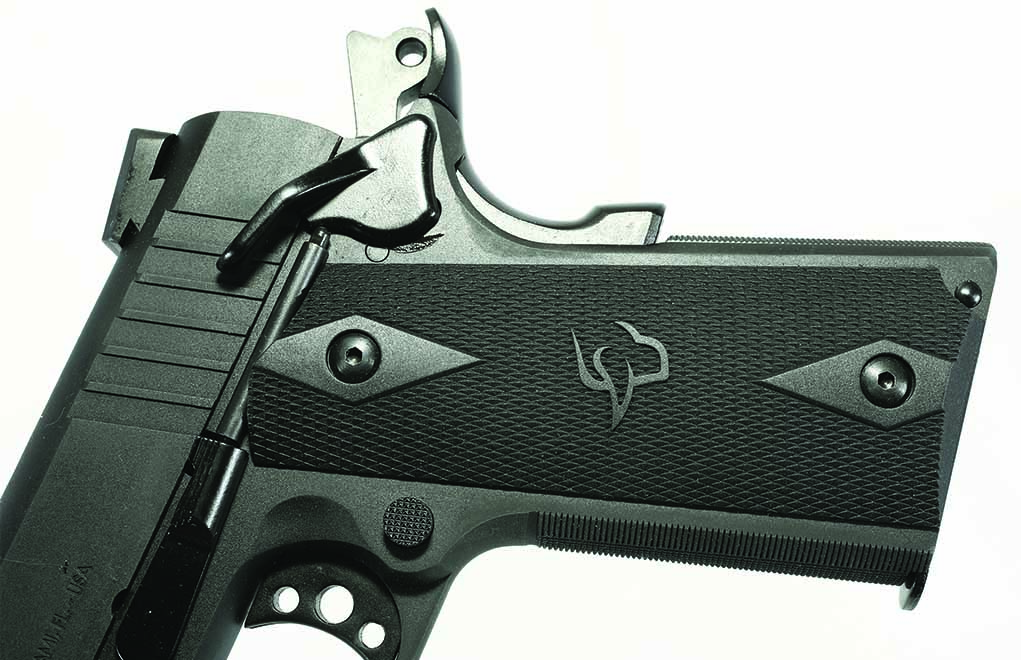
The slide has cocking serrations in the regular place and up near the muzzle. The sights are both Novak-compatible, so you can swap the factory sights out if you wish. If you’re a fan of the three-dot combat style, then no need to change. The ejection port is the now-normal lowered and scalloped, for ease of ejection. The barrel, slide, and frame all bear the serial number.
The frame lacks an accessory rail (not a problem on a 1911, for most situations). The slide stop is a standard checkered stop; the thumb safety is clearly an Ed Brown design, as is the grip safety. These you won’t need to change, as they’re among the best designs to have on the 1911. The trigger is lengthened and lightened by means of three holes drilled through the bow.
The front strap of the Taurus 1911 Commander hasn’t been lifted; that is, the radius from front strap to trigger guard is the expected curve. The front strap is a bit “chunky” in that the outer radius doesn’t mirror the inner radius. This makes the frame feel a bit thicker, but unless it’s pointed out, most shooters won’t notice.
The front strap is checkered and while the diamonds and bars have flats on them, the lines are clean, straight, and parallel. If you wished the checkering to be sharper, it’d be easy enough to have a pistol smith chase them or learn it yourself. Be aware, however, that sharp checkering can be tough on people whose hands are office-soft.
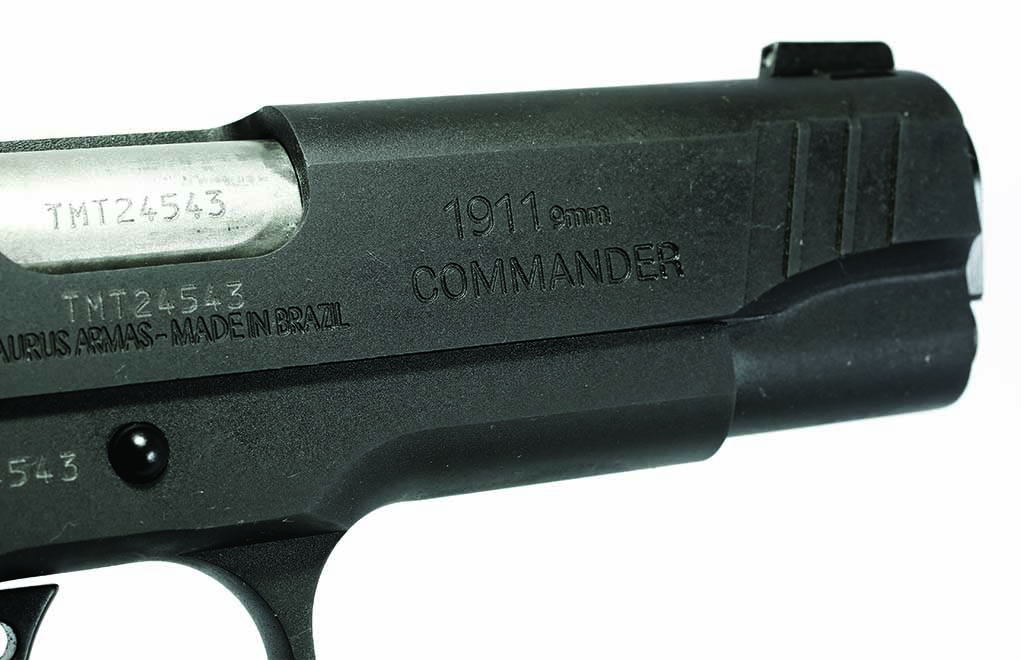
The mainspring housing is flat and checkered. Well, the “checkering” has all the hallmarks of being a casting, as the “diamonds” are more round in shape than pyramids. However, like the front strap, you can chase the checkering yourself. Maybe even start here and go to the front strap once you’ve learned the tricks. And if you mess up the mainspring housing, it’s perhaps the most easily changed part on a 1911.
Why do I mention working on the commander? Because, Taurus does. They’re more than eager to tell us that it’s “easily customized, as it is built with industry-standard parts.” In other words, go to town.
The barrel is a hard-chromed, integral-ramp barrel that uses a bushing. It isn’t a coned lockup, making it suitable for competitions where coned barrels are prohibited. The magazine well has a small but noticeable bevel to it, making reloading a bit easier.
One thing that Taurus has done that might not be so good is the firing pin block. This is a Series 80-type setup, and some don’t like them. I don’t object, as long as everything works as designed, and this one does. Another slight oversight is the crown, or the lack of one. The muzzle is flat, with only the smallest of bevels or radii at the meeting of the bore to the muzzle. As thick as the barrel walls are there, I’d liked to have seen a more aggressive crown machined into it.

The recoil spring assembly uses a full-length guide rod. This is one of those details that can create religious-level acrimony among shooters. If it bothers you, it’s easily changed. While I much prefer the design that St. Browning originated, if the current system works, I usually leave it alone. But, since Taurus has made the commander so “rebuildable,” you could easily swap the parts needed to make it more like what John Moses had in mind.
The grips are molded rubber, double-diamond style with the Taurus logo inset in the checkered pattern.

The magazines are blued and made by Mec-Gar (a very good choice). To accommodate the 9mm cartridge, the rear of the tube has a sheet metal spacer held in place by means of stab crimps. The 9mm 1911 world goes back and forth about this. Some think the best way to hold, position, and feed the cartridge is to park it at the front of the tube—hence, the spacer in the rear. Another camp deems that holding it in the back of the tube and using the front as an extra feed ramp geometry control dimension allows for the most reliable feeding. There’s a third camp (isn’t there always?) who feels no spacer is needed, and you can use .38 Super magazines. Whatever works, or blows your skirt up, go with it.
Here’s the dirty secret of the 1911 world: Your pistol will tell you what it likes. Use what it likes.
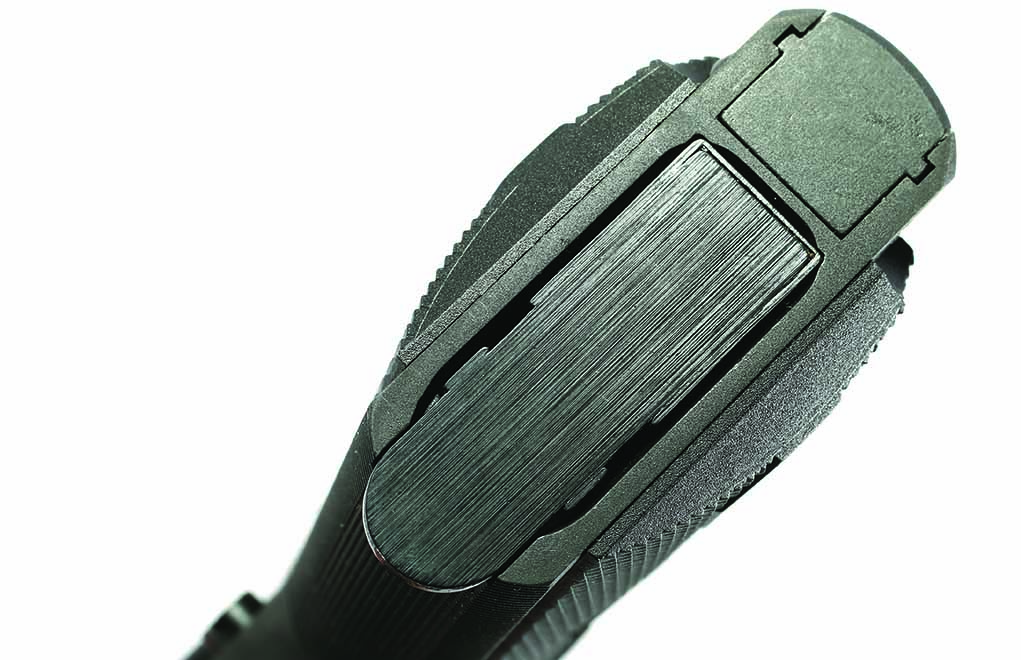
Now, as an all-steel pistol with an integrally ramped barrel, the Taurus will have no problems with 9mm+P ammunition. At 38 ounces, you probably won’t either. Vanilla-plain big-box-store FMJ ammo will be soft in recoil and a pleasure to shoot.
As with the magazines, your pistol will tell you what it likes as far as accuracy is concerned.
If the Shoe Fits
So, what’s the purpose of a pistol such as this one?
For one, it makes a fun practice and just blastin’ pistol. It’s all steel, so you won’t wear it out anytime soon. Recoil won’t kill you. In fact, with the softest-shooting ammo you can find or load, it’d be perfect for a new shooter. It’s accurate, has low recoil, and it’s a “real” gun, not an airgun, or a rimfire. (Yes, I know those are real guns, too, but a lot of new shooters make a big distinction between them and a 9mm. A 9mm is real to them, more so than a .22 LR.)
Accuracy will be better than most owners. If you need more, I refer you back to all steel—an industry standard. If you want a more accurate barrel, it’s easy enough to find and have one installed. Or start your 1911 ’smithing adventures by installing a tighter-fitting bushing and see what results you get.
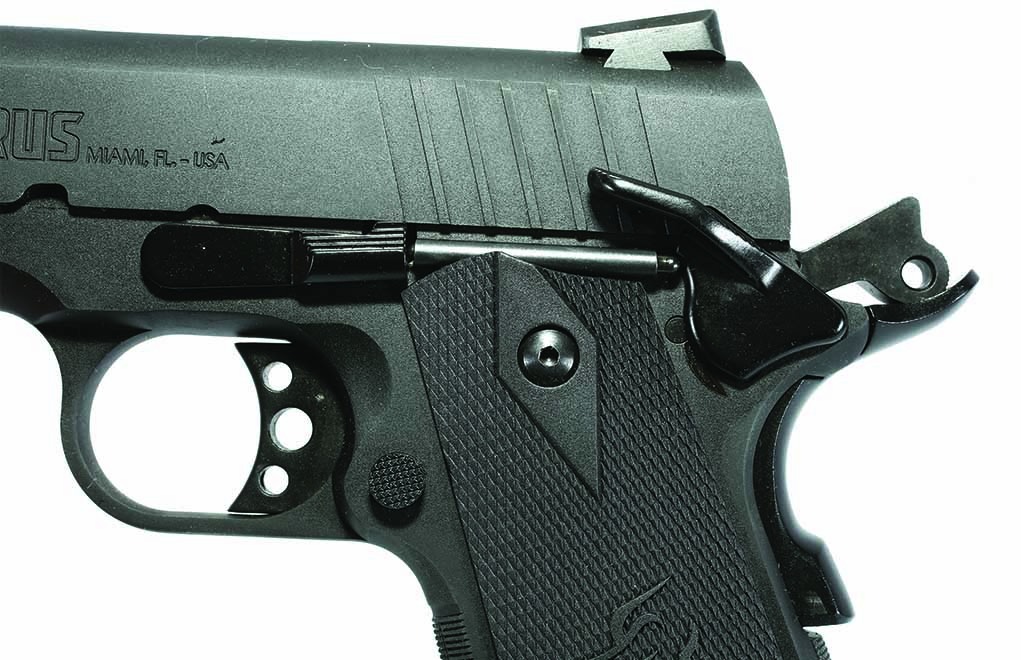
As a competition gun, the Taurus commander might be a bit lacking. The sight radius of the shorter slide is going to cost you a few points. You’d best check with the details of the competition you want to enter to make sure that some aspect of the Taurus doesn’t put you on the outside. But it’ll get you started, and even a long way toward winning before you have to move up.
As a daily carry gun, it’d be great. Yes, a bit heavy, but a proper belt and holster will make it comfortable.
As a home-defense gun, its only lack is that there’s no place to mount a light. But there are techniques to holding a light and pistol that you can find—practice and use the most comfortable one.
Last bonus: the price. You really can’t touch it for a reliable, all-steel 1911.
Taurus 1911 Commander Specs
Type: Single-action pistol
Caliber: 9mm Parabellum (.45 ACP also available)
Capacity: 9+1 rounds
Barrel: 4.2 inches
Length: 7.9 inches
Weight: 38 ounces
Trigger: 4 pounds, 4 ounces SA
Finish: Blued steel (PVD Prizm available in .45 ACP)
MSRP: $640
Maker: Taurus USA
For more information on the Taurus 1911 Commander, please visit taurususa.com.
Editor's Note: This article originally appeared in the October 2020 issue of Gun Digest the Magazine.
A Ton More Taurus:
- Taurus Model 942
- Taurus G3
- Nimble Monster: Taurus Raging Hunter Revolver
- Verdict: Taurus Public Defender Review
- Concealed Carry Handguns: Taurus Curve Review

Next Step: Get your FREE Printable Target Pack
Enhance your shooting precision with our 62 MOA Targets, perfect for rifles and handguns. Crafted in collaboration with Storm Tactical for accuracy and versatility.
Subscribe to the Gun Digest email newsletter and get your downloadable target pack sent straight to your inbox. Stay updated with the latest firearms info in the industry.

![Best Concealed Carry Guns In 2025 [Field Tested] Wilson Combat EDC X9S 1](https://gundigest.com/wp-content/uploads/Wilson-Combat-EDC-X9S-1-324x160.jpg)


![Best 9mm Carbine: Affordable PCCs [Tested] Ruger Carbine Shooting](https://gundigest.com/wp-content/uploads/Ruger-Carbine-Shooting-100x70.jpg)
![Best AR-15: Top Options Available Today [Field Tested] Harrington and Richardson PSA XM177E2 feature](https://gundigest.com/wp-content/uploads/Harrington-and-Richardson-PSA-XM177E2-feature-100x70.jpg)
